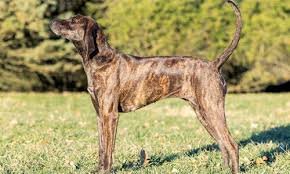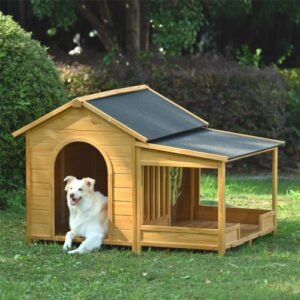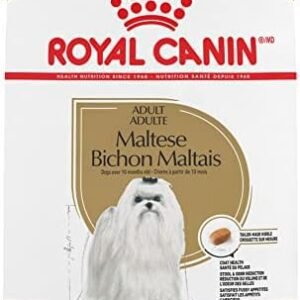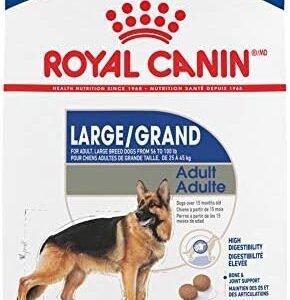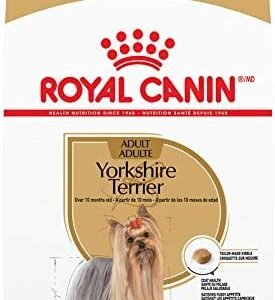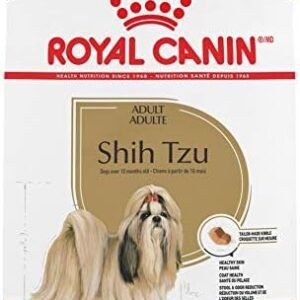Are you in search of a loyal, independent, and resilient canine companion? Look no further than the Hokkaido dog breed. In this article, we’ll delve into the world of the Hokkaido, a breed that’s as unique as it is captivating. Understanding the characteristics and temperament of the Hokkaido is crucial when selecting the right breed to complement your lifestyle.
Table of Contents
Selecting the ideal canine companion
Selecting the ideal canine companion is a decision that goes beyond a mere preference for a specific appearance or size. It’s about understanding the inherent traits of a breed and how they align with your daily life. Each dog breed possesses a set of unique characteristics that influence their behavior, needs, and compatibility with your lifestyle.
The Hokkaido, with its distinct personality and attributes, is no exception. To make an informed decision, it’s crucial to unravel the key aspects that define this breed. Although some data about the Hokkaido remains unknown, we will delve deeper into each of these elements throughout this article.
So, whether you’re a first-time dog owner or a seasoned enthusiast looking for an exceptional addition to your furry family, read on to discover what makes the Hokkaido a breed worth considering.
Here is a table highlighting the unique characteristics of the Hokkaido dog breed:
| Characteristic | Description |
|---|---|
| Origin | Japan (Hokkaido Island) |
| Size | Medium (Males: 50 cm, Females: 46 cm height) |
| Weight | 20–30 kg (44–66 lbs) |
| Coat | Double-coated, thick, with outer coat straight and undercoat soft |
| Coat Colors | Red, Black, Brindle, White, Sesame, Black and Tan |
| Temperament | Loyal, brave, intelligent, strong hunting instincts |
| Energy Level | High, requires regular exercise and activity |
| Lifespan | 11–15 years |
| Health Issues | Generally healthy but prone to hip dysplasia |
| Distinct Features | Sharp ears, curled tail, robust and muscular body |
| Training | Trainable, responds well to firm and consistent leadership |
| Adaptability | Adaptable to cold climates, due to their thick coat |
| Interaction with Family | Very loyal and protective, bonds closely with family |
| Interaction with Other Pets | Can be territorial, but generally good with other dogs if socialized early |
| Hunting Ability | Known for hunting large game like deer and bears in the rugged terrain of Japan |
Breed History and Origin
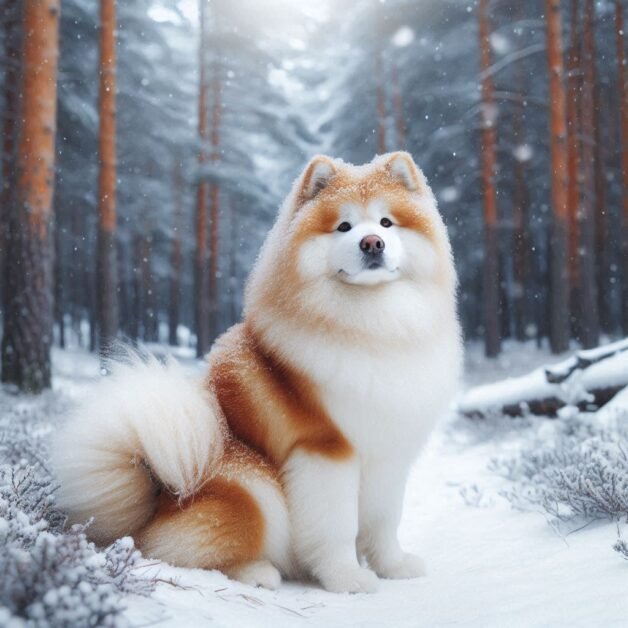
Exploring Their Roots
Notable Traits
What makes the Hokkaido breed truly remarkable are its notable traits that have been cherished through the ages. These traits contribute to their unique appeal as a companion dog:
- Independence: Hokkaido dogs are known for their independence and self-reliance. They have a strong survival instinct, which is a testament to their heritage in the challenging Hokkaido environment.
- Loyalty: Despite their independent nature, Hokkaido dogs are fiercely loyal to their human companions. They form strong bonds and are protective when the need arises
- Resilience: The Hokkaido’s ability to thrive in harsh conditions and their endurance during hunts showcases their remarkable resilience.
- Agility: These dogs are agile and quick on their feet. They excel in activities that require agility and speed.
- Minimal Grooming: The Hokkaido has a thick double coat that requires minimal grooming. Their coat helps them stay warm in cold climates but sheds seasonally.
- Adaptability: This breed’s adaptability to extreme weather conditions, including cold temperatures, is a testament to their hardiness.
The relevance of their origin as hunting and working dogs is still evident in the Hokkaido’s character. While their role as hunters has evolved, their independence, loyalty, and resilience remain integral to their nature. The Hokkaido is a breed that offers companionship with a touch of wilderness, making them a unique and steadfast choice for dog enthusiasts.
In summary, the Hokkaido’s history and origin have played a pivotal role in shaping its distinctive characteristics and its enduring appeal in the modern world. Whether as a resilient family pet or a loyal companion, the breed’s rich heritage continues to shine through its remarkable traits.
Understanding the Hokkaido Breed’s Traits
The Hokkaido breed is known for its unique set of traits that make it stand out in the world of canines. In this section, we will delve into the physical characteristics, temperament, and behavioral traits of the Hokkaido. Understanding these aspects is crucial when considering this breed as your potential companion.
Physical Characteristics
Size
The Hokkaido is a medium-sized breed with a well-proportioned and sturdy body. While precise height and weight figures may vary among individual Hokkaido dogs, they generally stand between 18 to 22 inches at the shoulder and weigh anywhere from 45 to 65 pounds. Their size and build make them suitable for various tasks, from hunting to companionship.
Coat Type and Color
Hokkaido dogs boast a dense double coat designed to protect them from the harsh Hokkaido climate. The outer coat is straight, while the undercoat is soft and insulating. Their coat colors are typically sesame (red with black-tipped hairs), red, black and tan, or white. The Sesame variety is especially cherished for its unique and striking appearance.
Temperament Overview
The Hokkaido is renowned for its independent and loyal temperament. They are known for being protective and brave, making them excellent family pets. Here’s an overview of their temperament:
Family-Friendly
Hokkaido dogs are protective of their families. They are known to be gentle and affectionate with their human companions, making them great with children. Their loyalty ensures they will stand by your side.
Alert and Brave
These dogs are alert and brave, with a strong sense of protective instincts. They make excellent watchdogs and are always ready to defend their loved ones.
Independence
Hokkaido dogs have a strong independent streak, which is a reflection of their history as hunters. This independence doesn’t diminish their loyalty but makes them self-reliant.
Social Interaction
While they may be independent, Hokkaido dogs enjoy social interaction and are known to form strong bonds with their families. They thrive when they are part of family activities.
Environment Needs
Space
Hokkaido dogs are adaptable to living in various environments. While they can thrive in houses with yards, they can also adjust to apartment living provided they receive regular exercise.
Temperature
Their thick double coat allows them to tolerate colder temperatures well. They are well-suited for cold climates. In hot weather, precautions should be taken to prevent overheating.
Common Behavioral Traits
Positive Traits
- Loyalty: Hokkaido dogs are exceptionally loyal to their owners. They form strong bonds and are known for their faithfulness.
- Independence: This breed’s independence showcases their self-reliance, which is a trait inherited from their history as hunters.
- Bravery: Hokkaido dogs are known for their bravery, making them excellent protectors of their families.
Challenging Traits
- Independence: While their independence is an asset, it can sometimes lead to stubbornness in training. Consistent training methods and patience are required.
- Social Interaction: Hokkaido dogs require social interaction and may experience separation anxiety if left alone for extended periods. Proper training and companionship can mitigate this.
In summary, the Hokkaido is a breed with a unique blend of independence, loyalty, and resilience. They are well-suited to family life, protective of their loved ones, and adaptable to different living environments. While they may have an independent streak, they are social dogs at heart, craving the company of their human family.
Popularity and Recognition

In this section, we’ll explore the current popularity and recognition of the Hokkaido breed. Understanding their status in today’s canine world and their recognition by kennel clubs and breed organizations is essential for anyone considering this remarkable breed as a potential pet.
Current Popularity
The popularity of dog breeds often experiences fluctuations over time, influenced by various factors such as media exposure, celebrity ownership, and lifestyle trends. As of recent years, the Hokkaido has maintained a moderate level of popularity among dog enthusiasts and pet owners.
Trend in Ownership
Hokkaido dogs have found favor among individuals and families looking for a loyal, protective, and independent canine companion. Their balanced temperament and adaptability to various living environments contribute to their continued appeal.
Versatile Companions
The Hokkaido’s versatility as both a protective family pet and a working dog in various roles, including hunting, has contributed to their steady popularity. Their loyalty and bravery make them well-suited for families with children.
Breed Recognition
Breed recognition plays a significant role in establishing breed standards, promoting responsible breeding practices, and providing a platform for showcasing the breed in various competitions and events. The Hokkaido has garnered recognition from several kennel clubs and breed organizations.
Japan Kennel Club (JKC)
The Japan Kennel Club, based in the breed’s country of origin, recognizes the Hokkaido and provides breed standards and guidelines for breeding and showing these dogs. It’s the primary authority on the breed in Japan.
American Kennel Club (AKC)
As of the knowledge cutoff date in 2022, the Hokkaido is part of the AKC Foundation Stock Service (FSS). While not yet fully recognized by the American Kennel Club (AKC), the FSS serves as a step toward full recognition. The AKC is constantly reviewing and adding new breeds to its registry, and it’s possible that the Hokkaido may achieve full recognition in the future.
United Kennel Club (UKC)
The United Kennel Club recognizes the Hokkaido breed and provides guidelines for breed standards and shows. The UKC is a well-known kennel club that includes various breeds in its registry.
Other National Kennel Clubs
Various national kennel clubs around the world may recognize the Hokkaido, each with its own breed standards and classifications. It’s essential for prospective owners to consult their local kennel clubs or breed organizations for specific information and resources related to the breed.
Notable Breed Varieties
The Hokkaido breed doesn’t have notable varieties or subtypes like some other breeds. However, they may exhibit slight variations in coat color, with sesame, red, black and tan, and white being the primary color patterns. The sesame Hokkaido is particularly distinguished for its unique and striking coat pattern.
Health Considerations and Care
Ensuring the health and well-being of your Hokkaido is paramount to provide them with a happy and fulfilling life. In this section, we’ll discuss common health issues that the breed may be prone to and provide insights into their average lifespan and tips for
Common Health Issues
While Hokkaido dogs are generally robust and resilient, like all breeds, they can be prone to certain health issues. It’s essential for prospective owners to be aware of these potential health concerns to provide the best care for their canine companions. Some common health issues in the Hokkaido breed include:
| Health Issue | Description | Prevention/Management |
|---|---|---|
| Hip Dysplasia | Improper development of the hip joint, leading to instability and arthritis. | Regular exercise, balanced diet, and weight management. |
| Eye Conditions | Includes issues like progressive retinal atrophy (PRA), cataracts, and glaucoma. | Regular eye check-ups with a veterinarian for early detection. |
| Heart Conditions | Can include congenital heart defects and degenerative valve disease. | Routine veterinary check-ups to monitor heart health. |
| Bloat (Gastric Torsion) | Life-threatening condition where the stomach fills with gas and twists. | Feed smaller, frequent meals; avoid exercise after eating. |
| Patellar Luxation | Dislocation of the kneecap causing lameness and pain. | Regular vet visits and monitoring; surgery may be needed in severe cases. |
| Skin Allergies | Can be caused by food, environmental allergens, or parasites. | Regular grooming, proper diet, and managing environmental triggers. |
Average Lifespan
The average lifespan of a Hokkaido dog is not precisely known, as it can vary depending on various factors, including genetics, diet, and overall care. However, similar breeds of this size typically have a life expectancy of around 11 to 15 years. With proper care and a healthy lifestyle, your Hokkaido can enjoy a long and fulfilling life.
Tips for Health and Care
To ensure the well-being of your Hokkaido and help them live a healthy and happy life, here are some essential tips for health and care:
Schedule routine vet visits to monitor health, catch potential issues early, and ensure vaccinations and preventive care are up to date.
Provide a high-quality, balanced diet suited to your Hokkaido’s age and activity level. Consult a vet for specific nutritional advice.
Hokkaido dogs are active and agile; daily exercise and mental stimulation, such as walks and interactive play, are essential.
Regular grooming helps maintain coat and skin health. Brush their double coat to manage shedding, and check ears, eyes, and teeth for cleanliness.
Spend quality time with your Hokkaido, as they thrive on social interaction. Avoid leaving them alone for extended periods to prevent separation anxiety.
Start obedience training early, focusing on positive reinforcement. Socialize your dog with other animals and people to promote good behavior.
Be cautious during hot weather, as Hokkaidos prefer colder climates. Limit exercise during heat, and provide a cool, shaded environment.
Understand the Hokkaido’s traits, such as loyalty, independence, and protectiveness, and tailor your care and training to these characteristics.
Daily Exercise Routine
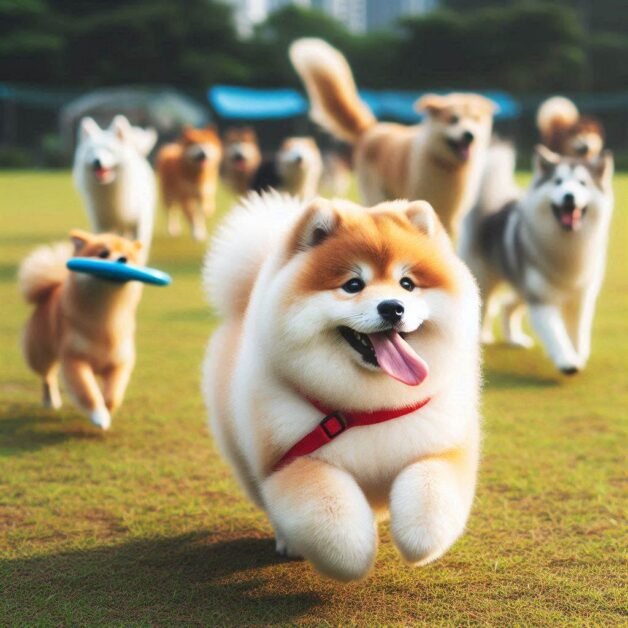
1. Brisk Walks:
Hokkaido dogs benefit from daily brisk walks. Aim for at least one to two walks per day, with each walk lasting around 30 minutes to an hour. These walks not only provide physical exercise but also give them the opportunity to explore and engage with their surroundings.
2. Playtime:
Engage in interactive play sessions with your Hokkaido. Games like fetch and tug-of-war can be particularly enjoyable for them. These activities tap into their agility and intelligence, keeping them mentally stimulated while providing physical exercise.
3. Agility Training:
Hokkaido dogs are known for their agility. Consider agility training, which involves obstacle courses and jumps. This not only provides physical exercise but also challenges their problem-solving skills and coordination.
4. Hiking and Outdoor Adventures:
Given their resilience and adaptability to various environments, Hokkaido dogs make excellent companions for hiking and outdoor adventures. Exploring trails and spending time in nature is a great way to provide exercise and mental stimulation.
Mental Stimulation
In addition to physical exercise, it’s crucial to engage their minds. Hokkaido dogs are intelligent and need mental stimulation to stay happy and content. Here are some ways to keep them mentally sharp:
Puzzle Toys:
Provide puzzle toys or treat-dispensing toys to challenge their problem-solving abilities. These toys encourage them to work for their rewards, keeping their minds active.
Obedience Training:
Enroll your Hokkaido in obedience training classes. This not only helps with their socialization but also reinforces good behavior and manners. Positive reinforcement methods work well with this breed.
Nose Work:
Engage in nose work activities. Hide treats around your home or yard and let your dog use their keen sense of smell to find them. This taps into their natural hunting instincts and provides mental stimulation.
Exercise Precautions
While Hokkaido dogs are adaptable to various living environments, there are some precautions to consider:
Weather:
Hokkaido dogs are well-suited for cold weather, thanks to their thick double coat. However, in hot weather, you should exercise caution to prevent overheating. Ensure they have access to shade and water during warm days.
Joint Health:
Being medium-sized dogs, Hokkaido can be prone to joint issues, including hip dysplasia. Avoid vigorous exercise on hard surfaces, especially when they are puppies. Gradually increase exercise intensity as they grow to protect their joints.
Socialization:
Proper socialization from a young age is essential. This helps them interact well with other dogs and people, making outings and social activities more enjoyable for both you and your Hokkaido.
In summary, Hokkaido dogs benefit from a daily routine that includes brisk walks, playtime, and agility training. Engaging their minds with puzzle toys, obedience training, and nose work activities is equally important. Understanding their exercise needs and being mindful of weather and joint health will ensure that your Hokkaido stays healthy, happy, and physically fit.
Grooming Needs

Grooming your Hokkaido is an essential part of their care routine. These dogs have a distinctive double coat that requires regular maintenance to keep them comfortable and healthy. Let’s explore their grooming needs in detail:
| Care Aspect | Description | Frequency/Notes |
|---|---|---|
| Brushing | Hokkaido dogs have a double coat that sheds seasonally. Brush regularly to remove loose fur and prevent matting. | Brush a few times a week; daily during shedding seasons. |
| Bathing | Bath Hokkaido dogs every 3-4 months or when visibly dirty. Use mild dog shampoo. | Every 3-4 months or as needed. |
| Seasonal Shedding | Hokkaido dogs shed heavily twice a year when their coat changes with the season (“blowing their coat”). | Brush daily during these periods. |
| Ear Care | Check ears regularly for dirt or signs of infection. Clean with vet-recommended solution if necessary. | Check weekly and clean as needed. |
| Eye Care | Watch for signs of eye irritation, redness, or discharge. Consult a vet if any issues arise. | Check weekly or more frequently if issues are present. |
| Nail Care | Trim nails regularly to prevent overgrowth, which can cause discomfort or orthopedic problems. | Trim every 3-4 weeks or as needed. |
| Dental Care | Brush your Hokkaido’s teeth regularly with a dog-specific toothbrush and toothpaste to prevent dental problems. | Brush 2-3 times a week. |
Seasonal Considerations
During the winter months, your Hokkaido’s coat serves as excellent insulation. Be mindful of ice balls forming between their paw pads, and trim the fur between the pads to prevent this. In the summer, keep them cool and avoid strenuous exercise in hot weather.
In summary, grooming your Hokkaido is a vital part of their care. Regular brushing, occasional bathing, and proper ear, eye, nail, and dental care are essential to keep them healthy and comfortable. Understanding the seasonal considerations for their coat and environment ensures that they are well-cared for throughout the year.
Nutrition and Feeding Guidelines
Feeding your Hokkaido dog the right diet is crucial for their health and well-being. Providing the appropriate nutrition ensures that your dog maintains a healthy weight, strong muscles, and a shiny coat. Here are some nutrition and feeding guidelines to help you make informed choices for your Hokkaido:
High-Quality Dog Food
Start with a high-quality dog food that provides balanced nutrition. Look for brands that list meat, poultry, or fish as the first ingredient, as this indicates a good source of protein. You can choose between commercial kibble, canned food, or a combination based on your dog’s preferences and your veterinarian’s recommendations.
Age-Appropriate Diet
Hokkaido dogs have different dietary needs at various life stages. Here are some general guidelines:
- Puppy: Feed your Hokkaido puppy a high-quality puppy food that supports their growth and development. Puppies need more protein and calories than adult dogs. Consult your veterinarian for specific recommendations based on your puppy’s age and weight.
- Adult: Once your dog reaches adulthood (around one year old), switch to adult dog food. Look for a product that matches your dog’s size, activity level, and any specific dietary needs.
- Senior: As your Hokkaido reaches their senior years, they may require a diet formulated for older dogs. Senior dog food often contains joint supplements to support mobility and antioxidants to boost their immune system.
3. Portion Control
Maintaining the right portion size is essential to prevent overfeeding or underfeeding. The amount of food your Hokkaido needs depends on their size, age, activity level, and metabolism. Follow the feeding guidelines on the dog food packaging as a starting point and adjust based on your dog’s individual needs. Your veterinarian can provide a more accurate feeding plan.
4. Avoid Overfeeding
Hokkaido dogs are not typically prone to obesity, but overfeeding can lead to weight gain and related health issues. Be mindful of your dog’s caloric needs and avoid giving excessive treats or table scraps.
5. Fresh Water
Always provide your Hokkaido with fresh, clean water. Proper hydration is essential for their overall health. Monitor their water intake, especially during hot weather or periods of increased activity.
6. Dietary Restrictions and Allergies
Some Hokkaido dogs may have dietary restrictions or allergies. Pay attention to any signs of food allergies, such as skin irritation, digestive issues, or excessive itching. If you suspect your dog has food allergies or intolerances, consult your veterinarian for guidance on hypoallergenic or specialized diets.
7. Feeding Schedule
Establish a regular feeding schedule for your Hokkaido. Most dog owners opt for two meals a day, one in the morning and one in the evening. Feeding schedules help with portion control and can aid in house training. Avoid free-feeding, where food is available all the time, as it makes it harder to monitor your dog’s food intake.
8. Special Considerations
Consider any special dietary considerations based on your dog’s health and lifestyle. For example:
Active Dogs: If your Hokkaido is highly active, they may require more calories. Athlete-specific dog foods or foods labeled “high-performance” can be suitable.
Allergies or Sensitivities: If your dog has allergies or sensitivities, consult with your veterinarian to find a suitable hypoallergenic or limited-ingredient diet.
Pregnant or Nursing Females: Pregnant or nursing dogs have increased nutritional needs. Consult with your vet to ensure they receive the necessary nutrients.
Health Issues: If your Hokkaido has specific health issues, such as kidney problems or diabetes, they may require a prescription diet or a diet tailored to their condition. Your veterinarian will guide you on the appropriate choices.
It’s important to remember that individual dogs can have varying nutritional needs. Regularly monitor your dog’s weight, body condition, and overall health. If you have concerns about their diet or suspect any dietary issues, consult with your veterinarian for personalized advice and recommendations. Your vet can help create a feeding plan that’s tailored to your Hokkaido’s specific requirements, ensuring they receive the best possible care through nutrition.
Personal Stories and Testimonials
Real-life stories and testimonials from owners of the Hokkaido dog breed can provide valuable insights into what it’s like to live with this unique canine companion. These stories often shed light on the breed’s temperament, adaptability, and the joys and challenges of having a Hokkaido as part of the family.
Testimonial 1: The Adventure Buddy
Meet Sarah, an avid hiker and outdoor enthusiast who adopted a Hokkaido named Kumo. Sarah shares, “Kumo is my adventure buddy. We hike in the wilderness, and his agility and endurance are simply amazing. He has a strong sense of adventure and fearlessness. He’s been my loyal companion on numerous camping trips, and his adaptability to different weather conditions, from the cold winters to hot summers, is remarkable.
Kumo’s independence never gets in the way of our bond; if anything, it strengthens it. He’s fiercely loyal and protective when we’re out in the wild, and yet, he’s gentle and affectionate at home. Owning a Hokkaido has not only enriched my life but has also made my outdoor adventures even more thrilling.”
Testimonial 2: A Guardian for the Family
John and Emily adopted a Hokkaido named Hana as a family pet. “Hana is like our guardian,” says Emily. “We have two young kids, and Hana is incredibly gentle and patient with them. She has a strong protective instinct, and it’s heartwarming to see how she watches over the children. Even though she’s independent, she’s always there when we need her. Hana’s loyalty is unwavering, and we couldn’t have asked for a better family dog.”
Testimonial 3: The Adaptable Urban Dweller
Living in a bustling city, Mark found that the Hokkaido breed was a perfect fit for his lifestyle. “I was concerned about how a Hokkaido would adapt to urban living, but Mika proved me wrong,” Mark shares. “She’s comfortable in our apartment and has a moderate exercise routine that includes daily walks and playtime in the nearby dog park.
Mika’s adaptability to the city environment and her social nature have made her a beloved member of our community. She’s always eager to meet new people and their dogs. The Hokkaido’s independent streak is apparent when she explores the park on her own, but she’s quick to return when called. I love the balance between her independence and her affectionate side.”
Testimonial 4: The Hokkaido and Children
For parents like David and Lisa, the Hokkaido breed’s compatibility with children was a significant factor. “We have three children, and we wanted a dog that could be both a companion and a guardian,” says David. “We adopted Koji, a Hokkaido, and he has exceeded our expectations. Koji’s loyalty and bravery are unmatched.
He’s gentle with our kids and vigilant when it comes to their safety. The kids adore him, and he’s become an integral part of our family. He’s adaptable to our suburban lifestyle and doesn’t require extensive exercise but loves joining us on family outings. Koji’s independent spirit has been an asset in training; he learns quickly, and his loyalty makes him eager to please.”
Testimonial 5: The Challenge and Reward of Training
Training a Hokkaido can have its unique challenges, as Sarah explains, “Kumo’s independence was initially a bit of a challenge during training. He had his way of doing things. However, with patience, positive reinforcement, and consistent training, he quickly learned commands and behaviors. His intelligence and problem-solving ability were remarkable. I realized that his independent nature wasn’t stubbornness but a strong sense of self-reliance. Once I understood that, training became a rewarding experience. Kumo’s loyalty and the bond we developed through training are truly special.”
Cost of Owning a Hokkaido Dog Breed
Owning a Hokkaido dog breed comes with various expenses, both upfront costs and ongoing care. Understanding the financial commitment of dog ownership is essential to ensure your furry companion receives the care and attention they need. Here’s a breakdown of the expenses associated with owning a Hokkaido dog:
1. Adoption or Purchase Costs: The initial cost of acquiring a Hokkaido can vary. Adoption fees at rescue organizations are typically lower than purchasing from a breeder. Prices from breeders may vary based on factors like pedigree, health testing, and reputation. Expect to pay anywhere from a few hundred to several thousand dollars.
2. Veterinary Care: Regular veterinary check-ups are crucial to your dog’s health. This includes vaccinations, preventive care (flea and tick prevention, heartworm prevention), and any unexpected medical expenses. You should budget for routine visits and an emergency fund for unexpected health issues.
3. Food and Feeding: Hokkaido dogs require high-quality dog food that suits their age, activity level, and size. The cost of dog food can vary, but it’s essential to provide a well-balanced diet to maintain their health.
4. Grooming: Hokkaido dogs have a double coat that requires regular brushing to prevent matting. Additionally, occasional professional grooming may be needed. Budget for grooming tools, shampoo, and grooming services.
5. Training and Socialization: Enrolling your Hokkaido in puppy training classes or obedience training can be beneficial. This expense covers training fees and treats or rewards.
6. Exercise and Enrichment: While exercise doesn’t come with a direct cost, it’s essential to provide your Hokkaido with mental and physical stimulation. This may involve toys, puzzle feeders, or agility equipment.
7. Pet Insurance: Consider pet insurance to help cover unexpected veterinary costs. The monthly premium varies depending on coverage, deductibles, and your dog’s age. Pet insurance can provide peace of mind in case of a major medical issue.
8. Licensing and Registration: Check with your local government for dog licensing requirements and associated fees.
9. Supplies: You’ll need supplies such as a leash, collar, harness, food and water bowls, crate or dog bed, and toys.
10. Travel and Boarding: If you travel or need to board your dog, consider the cost of kennels, pet sitters, or travel expenses with your dog.
11. Miscellaneous Costs: Don’t forget miscellaneous expenses like poop bags, cleaning supplies, and unexpected costs.
It’s important to budget for both expected and unexpected expenses when considering dog ownership. Creating a monthly or yearly budget can help you manage the costs associated with your Hokkaido dog and ensure they receive the best care and attention
Choosing and Adopting a Hokkaido Dog Breed
Adopting a dog is a significant decision, and choosing the Hokkaido breed can be a rewarding experience. In this section, we’ll explore the reasons for adoption, research and preparation tips, the adoption process, and ethical considerations when it comes to Hokkaido dogs.
Reasons for Adoption
Adopting a Hokkaido dog is a wonderful choice for several reasons, and it’s essential to understand the benefits of giving rescue dogs a second chance. Here are some compelling reasons to consider adoption:
1. Saving a Life
By adopting a Hokkaido from a rescue or shelter, you’re providing a loving home to a dog in need. Many dogs in rescues have faced hardship and may be at risk of euthanasia if not adopted.
2. Supporting Rescue Organizations
Adoption supports the vital work of rescue organizations and helps fund their efforts to rescue, rehabilitate, and rehome dogs. Your adoption fees often contribute to the care of other animals in need.
3. Breed-Specific Love
If you have your heart set on the Hokkaido breed, adopting is an ethical way to have one as a companion. It allows you to enjoy the unique qualities of the breed while giving a home to a dog that truly deserves it.
4. Health and Behavior Assessment
Rescue organizations typically conduct health assessments and provide information about a dog’s behavior, helping you make an informed choice that matches your lifestyle.
5. Overcoming Myths
Adopting a rescue dog dispels myths and stereotypes associated with shelter animals. Many rescue dogs are loving, well-behaved, and make excellent companions.
Research and Preparation
Before adopting a Hokkaido, thorough research and preparation are essential to ensure a smooth transition for both you and your new companion. Here are some tips to consider:
Understanding Breed-Specific Needs
Hokkaido dogs have unique requirements due to their independent and protective nature. Understanding these needs, including exercise, socialization, and grooming, is crucial.
Financial Responsibilities
Owning a dog comes with financial responsibilities, including food, veterinary care, grooming, and supplies. Be prepared for the costs associated with pet ownership.
Home Preparation
Ensure that your home is safe and suitable for a Hokkaido dog. This includes securing your yard, removing hazards, and providing a comfortable and welcoming environment.
Adoption Process
The adoption process for a Hokkaido dog typically involves several steps to ensure that the dog is placed in a loving and responsible home. Here is an overview of what to expect:
1. Research and Find Reputable Rescues
Start by researching reputable rescue organizations that specialize in Hokkaido dogs. Look for organizations with a strong track record of rescuing and rehoming the breed.
2. Application
Once you’ve identified a rescue organization, you’ll need to complete an adoption application. This application often includes questions about your living situation, experience with dogs, and how you plan to care for the Hokkaido.
3. Home Visit
Some rescue organizations may conduct a home visit to ensure that your living environment is suitable for a Hokkaido. They’ll check for safety and any potential hazards.
4. Adoption Fee
Adoption fees vary but generally cover the dog’s vaccinations, spaying or neutering, and other necessary medical care. These fees contribute to the rescue organization’s ongoing efforts.
5. Meet-and-Greet
You may have the opportunity to meet the available Hokkaido dogs and spend time with them to see if there’s a connection. This step is essential to ensure that the dog and adopter are a good match.
6. Adoption Agreement
Upon approval, you’ll sign an adoption agreement outlining your responsibilities as an owner and the rescue’s policies. This agreement may include spaying or neutering requirements, commitment to responsible care, and contact information for follow-up.
7. Bringing Your Hokkaido Home
After completing the adoption process and paying the adoption fee, you’ll be ready to bring your Hokkaido home. Prepare your home with the necessary supplies and provide a welcoming and safe environment for your new companion.
Breeding and Ethical Considerations
While adoption is a fantastic choice for those seeking a Hokkaido dog, it’s also essential to consider responsible breeding practices. If you’re considering purchasing a Hokkaido from a breeder, here are some ethical considerations:
1. Health Screening
Responsible breeders conduct thorough health screenings to ensure that their breeding dogs are free from genetic health issues. They should provide documentation of these health clearances.
2. Genetic Diversity
Maintaining genetic diversity within the breed is crucial to prevent the emergence of hereditary health problems. Ethical breeders work to expand the gene pool while preserving breed standards.
3. Responsible Breeding
Ethical breeders prioritize the health and well-being of the dogs over profit. They provide a loving and comfortable environment for their dogs and prioritize their physical and mental health.
4. Puppy Socialization
Reputable breeders ensure that puppies are well-socialized and exposed to various stimuli, environments, and people during their early development.
5. Lifetime Commitment
Responsible breeders have a lifetime commitment to the dogs they produce. They are available to answer questions and provide support to puppy owners throughout the dog’s life.
By considering ethical breeding practices and choosing a responsible breeder, you can help promote the health and welfare of the Hokkaido breed. It’s essential to be diligent in your research and select a breeder who prioritizes the well-being of their dogs.
In conclusion, choosing and adopting a Hokkaido dog is a significant decision that comes with responsibilities and rewards. Whether you decide to adopt from a rescue organization or purchase from a responsible breeder, ensuring the well-being and happiness of your Hokkaido should always be the top priority. These remarkable dogs have much to offer in terms of loyalty, independence, and companionship, and by providing them with a loving home, you’ll embark on a journey of mutual happiness and fulfillment
FAQ
What is the origin of the Hokkaido dog breed?
The Hokkaido dog breed originated in Hokkaido Island, Japan, and is one of the oldest and purest Japanese breeds. They have a deep historical connection with the indigenous Ainu people.
Are Hokkaido dogs suitable for families with children?
Yes, Hokkaido dogs are known for their gentle and protective nature, making them great family pets. With proper socialization, they can be excellent companions for families with children.
Do Hokkaido dogs get along with other pets, such as cats?
With early socialization, Hokkaido dogs can coexist with other pets, including cats. However, it’s essential to introduce them gradually and monitor their interactions.
What is the grooming routine for Hokkaido dogs?
Hokkaido dogs have a double coat that requires regular brushing to prevent matting, especially during seasonal shedding. Their grooming needs are relatively low compared to some other breeds.
Are Hokkaido dogs easy to train?
Hokkaido dogs are intelligent but can be independent, which may require consistent training methods and patience. Positive reinforcement techniques work well with this breed.
Do Hokkaido dogs adapt well to apartment living?
While Hokkaido dogs are adaptable to different living environments, they can thrive in apartments if provided with regular exercise. However, they will benefit from access to outdoor space.
What are some unique health considerations for Hokkaido dogs?
Common health issues in Hokkaido dogs include hip dysplasia, eye conditions (PRA, cataracts, glaucoma), heart conditions, and bloat (gastric torsion). Regular veterinary check-ups are crucial to monitor their health.
Are Hokkaido dogs good for first-time dog owners?
While Hokkaido dogs can make wonderful companions, they may not be the best choice for first-time dog owners due to their independent nature. Experienced dog owners may find them more manageable.
What are some unique health considerations for Hokkaido dogs?
Common health issues in Hokkaido dogs include hip dysplasia, eye conditions (PRA, cataracts, glaucoma), heart conditions, and bloat (gastric torsion). Regular veterinary check-ups are crucial to monitor their health.
Are Hokkaido dogs good for first-time dog owners?
While Hokkaido dogs can make wonderful companions, they may not be the best choice for first-time dog owners due to their independent nature. Experienced dog owners may find them more manageable.
How much exercise do Hokkaido dogs require?
Hokkaido dogs have moderate exercise needs. Daily walks, playtime, and activities that engage their agility are essential to keep them healthy and happy.
Is the Hokkaido breed recognized by major kennel clubs?
Yes, the Hokkaido breed is recognized by several kennel clubs, including the Japan Kennel Club (JKC), American Kennel Club (AKC – Foundation Stock Service), and United Kennel Club (UKC). Recognition varies by region, so it’s important to check with local kennel clubs for specific information



